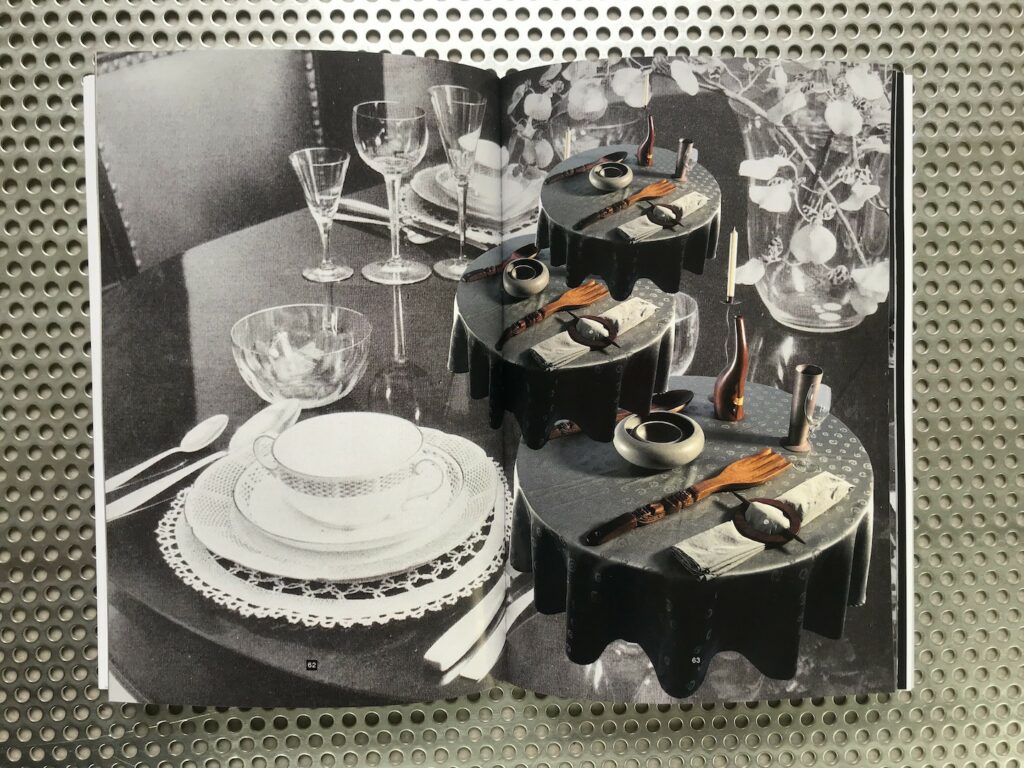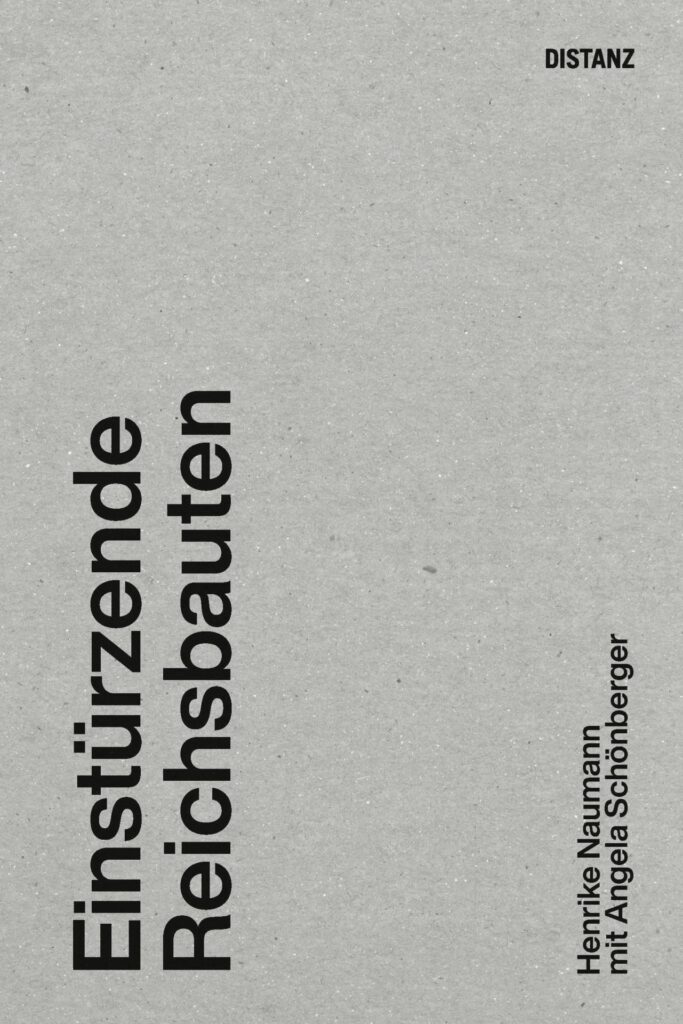Ruinenwert
Haus der Kunst
München, 2019

The installations by Henrike Naumann rely upon the suggestive power of used items of furniture and home decoration. Many of her works thus far examine the complexity of Germany‘s past as well as continuity and transformation of far-right movements. This is immediately followed by questions of belonging, identity and their uncertainty. For the Haus der Kunst, Naumann has developed a spatial installation entitled Ruinenwert. The work refers to the architecture of Hitler‘s Berghof residence on Obersalzberg which, like the former ‚Haus der Deutschen Kunst‘ (‚House of German Art‘), was a representative building designed by Gerdy Troost for the National Socialists.

We enter the installation through a replica of the fireplace of Berghof‘s ‚Great Hall.‘ Even the hall‘s monumental retractable window, which provided impressive views of the surrounding mountains, is cited by the artist. Yet, Naumann has replaced the panorama of the Alps with the contours of an ensemble of used furniture from the 1990s, augmented by blue objects. These objects allude to The Blue Light, the first film by the Nazi director Leni Riefenstahl, who later made propaganda films for the Nazi government.

With Ruinenwert, traces of the fascist architecture of the National Socialists coincide with fragmentary details, furniture and decorations, of the original interior of the museum. The minutely detailed room, which also references the Deutsche Architektur- und Handwerksausstellung (German Architecture and Applied Arts Exhibition), which took place at ‚Haus der Deutschen Kunst‘ during the Nazi era, demonstrates how political ideologies and power structures manifest themselves in design, decoration, and interior furnishings. Presented in a curved silver frame, the video work Brecher addresses the way in which the Nazis developed mythological images and aesthetics. The title itself recalls a public debate from 2019 about an expressionist painting of the same name by Emil Nolde – a self-confessed Nazi sympathizer – which hung in the office of former Chancellor Angela Merkel.
But the group show is abruptly interrupted in the large skylight room, which has been left to Henrike Naumann. Born in Zwickau in 1984, Naumann, who initially studied stage and costume design, is one of the most exciting contemporary artists. Henrike Naumann opens up sculpture for her generation. Her material is second-hand furniture and bulky waste.
Catrin Lorch, Süddeutsche Zeitung


The video shows a fur blowing in the wind, which can be seen as a reference to the motif of the Nolde painting. Accompanying this image are illustrations of the procession planned for the opening ceremonies of ‚Haus der Deutschen Kunst,‘ slowly captured by the camera as miniature furniture and objects, which can also be found in the installation, are carried through the picture by small figures. In addition, the Song of Barbarossa, composed by Friedrich Silcher, plays in the background. What at first sounds like a choir is a collage of several recordings edited together of a single voice, whereby this formal intervention critically alludes to the supposed unity of ‚Volk‘ (people) and ‚Führer‘ (leader) claimed by Nazi ideology.
Einstürzende Reichsbauten
Kunsthaus Dahlem
Berlin, 2021

In addition to the hoisting of swastika flags, the mass appearance of members of the party and its paramilitary associations in the spring of 1933 unmistakably announced the National Socialists’ seizure of power. They attempted to manifest their newfound power by fully penetrating society, especially in the private sphere: by idealizing conservative gender roles and family images, by dissolving and restructuring clubs and associations, by introducing new forms of greeting, or by prescribing state-oriented aesthetics in culture and art.

The exhibition Einstürzende Reichsbauten (Collapsing Reich Buildings), which is dedicated to the fusion of art, ideology, and (interior) architecture, shows how this political process was established and shaped in private space. It discusses how (interior) architecture can be misused to stage political power and opens a discourse on the private versus the public in totalitarian regimes.

For this purpose, Henrike Naumann is transforming Nazi sculptor Arno Breker’s former state studio – today’s Kunsthaus Dahlem – into a private-looking living room. With the help of original furniture by Paul Ludwig Troost – sofas, chairs, the cabinet of the director’s office, benches, commodes, and the interior of the former ‚Bierstüberl’ – from the Haus der Kunst in Munich, Naumann fuses artistic installation and private interior and in this way illustrates that Nazi ideology did not at all permeate society only in the public sphere, but in a special way also in the private sphere.
Einstürzende Reichsbauten
Distanz, 2021
In Einstürzende Reichsbauten / Tumbling Ruins, the artist Henrike Naumann, the art historian Angela Schönberger, and the architect and design theorist Andreas Brandolini draw a discursive connection between Naumann’s work Ruinenwert (2019), Schönberger’s research on Albert Speer, and Brandolini’s postmodernist design theory.

Texts





